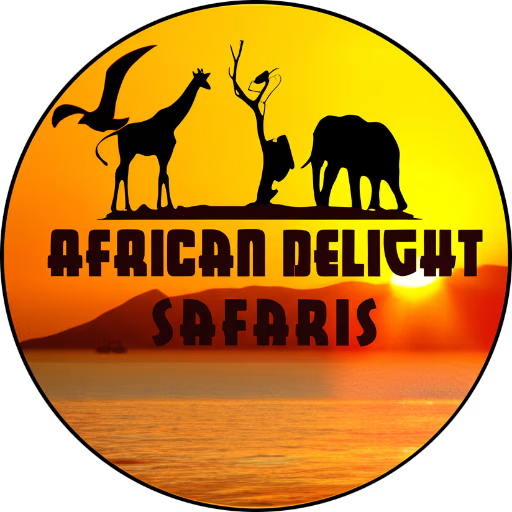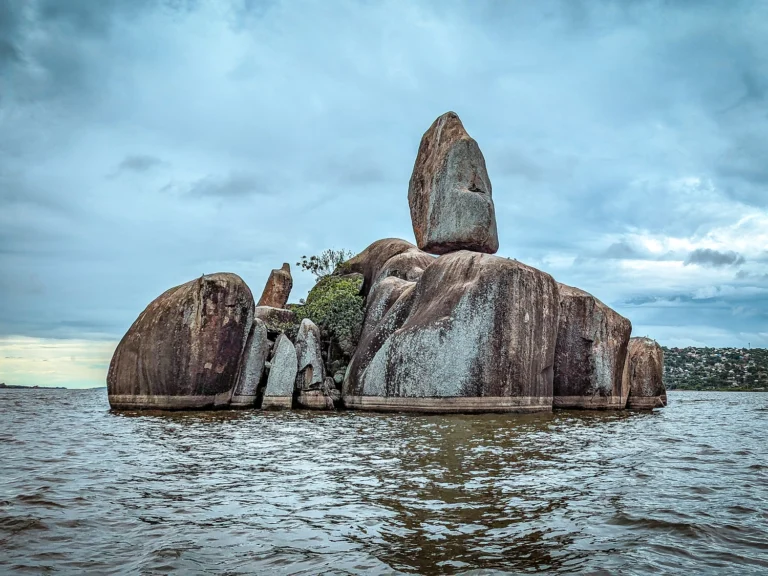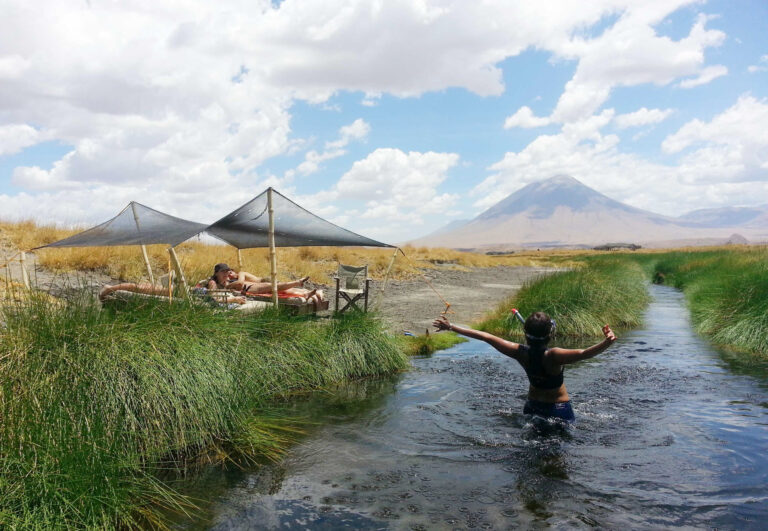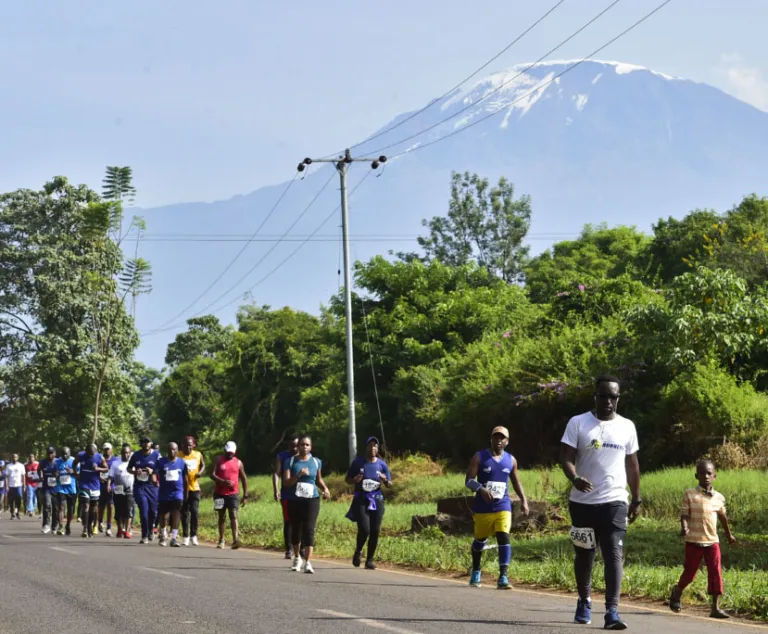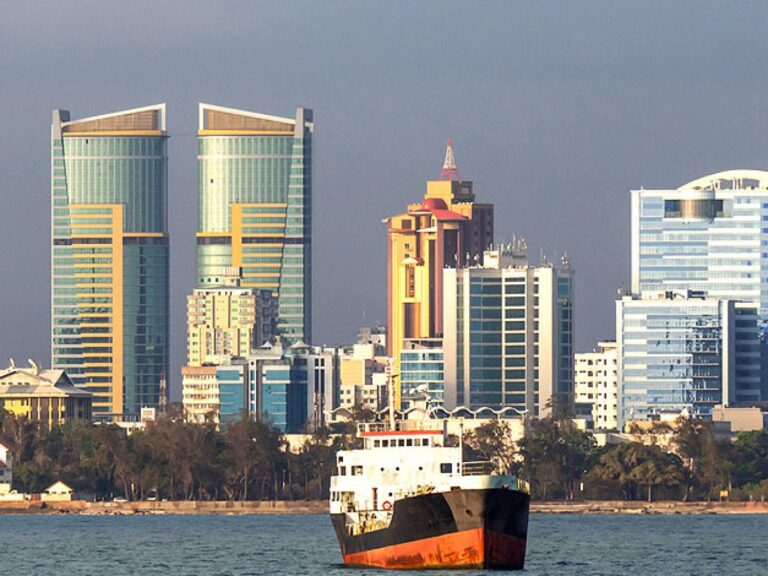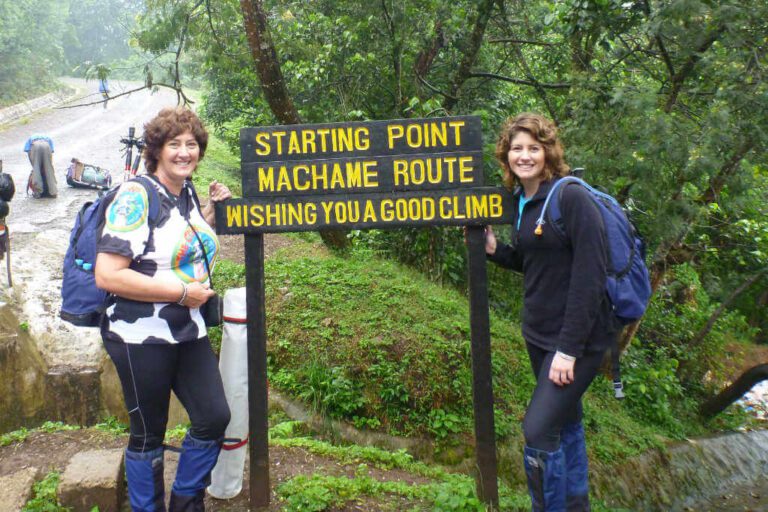Dar es Salaam isn’t just Tanzania’s largest city, it’s the country’s pulsating economic and cultural heart, where modern Africa meets rich Swahili heritage, centuries-old trade routes, and stunning tropical coastal beauty. When planning your East Africa itinerary, most travelers prioritize world-class safari destinations like the Serengeti and the magical beaches of Zanzibar, which are extensively covered in our Ultimate Guide to Tanzania. However, bypassing Dar es Salaam means missing the authentic, vibrant soul of the nation.
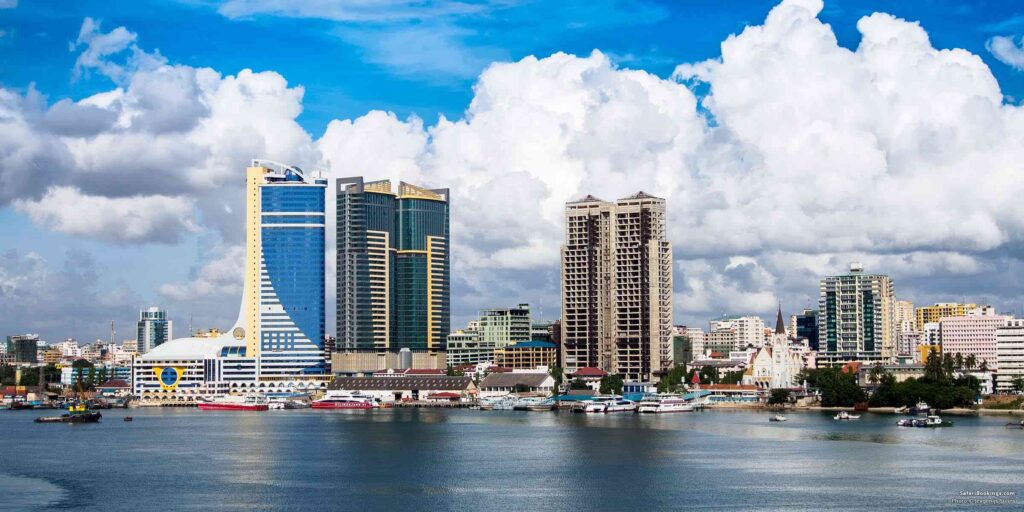
Often overlooked in favor of those major tourist hubs, the city of Dar offers a surprisingly deep and vivid travel experience for those willing to dig beneath the surface. From historic colonial architecture and powerful museum exhibits to chaotic, colourful local markets and serene island escapes, Dar es Salaam is an essential destination for cultural exploration.
This advanced guide is specifically designed for travelers who want to go beyond surface-level sightseeing. Here’s everything you should do in Dar es Salaam, from immersive cultural gems to bustling markets, serene island escapes, accessible safaris, and authentic local flavours.
1. Dive Deep into Dar es Salaam City History & Culture
Start your exploration by understanding where Dar es Salaam comes from, its colonial roots, indigenous influences, and historical crossroads as a port city.
a) The National Museum and House of Culture
The National Museum and House of Culture is a natural first stop. It offers a rich introduction to Tanzanian archaeology, ethnography, and the nation’s colonial past. You’ll see fossils from Olduvai Gorge, cultural relics from various tribes, and exhibits on German and British colonial eras. But beyond the permanent displays, this museum often hosts rotating art and cultural showcases in its House of Culture wing so check the calendar for live events or exhibitions that add a modern layer to your historical understanding.
b) Makumbusho Village Museum
Just outside the city center, the Makumbusho Village Museum is a living cultural exhibit. It features traditional homes and structures from over 16 Tanzanian ethnic groups, reconstructed using authentic techniques. Visit on weekends when local dancers and musicians often perform traditional routines. You’ll also see artisans weaving, carving, and making crafts. This is one of the most immersive ways to understand Tanzania’s cultural diversity.
c) St. Joseph’s Cathedral & Azania Front Lutheran Church
In the city center, visit St. Joseph’s Cathedral (a Gothic church facing the harbour, built by the Germans between 1897 and 1902) and the Azania Front Lutheran Church (Constructed in gothic style by German missionaries between 1899 and 1902), remnants of German colonial presence. These waterfront churches showcase distinct European architecture adapted to the coastal Swahili environment. At St. Joseph’s, don’t miss the intricately detailed stained-glass windows. Azania’s red-tiled roof and palm-lined backdrop make it one of the most photogenic colonial-era landmarks.
d) Askari Monument
Nearby St. Joseph’s Cathedral & Azania Front Lutheran Church stands the Askari Monument, a bronze statue honoring African soldiers (Askari) who served in World War I. It depicts an armed bronze soldier from World War One, pointing his bayonet towards the harbour front, a symbolic nod to its protective role. The Soldier’s statue stands where a German statue once stood signifying the shift from German to British rule after World War I. Positioned at the center of a busy roundabout along Samora Avenue, the monument has become a powerful symbol of Tanzania’s colonial past, wartime sacrifices, and national pride.
e) Old Boma
Lastly, explore the Old Boma, one of the city’s oldest buildings built in the 1860s by the Sultan of Zanzibar. Its coral stone walls and Arab-Swahili design speak to a time when Dar was more influenced by the Indian Ocean trade routes than European powers. Today, it stands as a quiet reminder of the city’s layered past. Visit the Boma, now the site of the Dar es Salaam Centre for Architectural Heritage (DARCH). Here, you can explore a permanent exhibition on the city’s architectural evolution, get specific tourist information about its built heritage, and check out temporary exhibitions featuring art, photography, and architecture
2. Immerse Yourself in Dar es Salaam’s Local Markets & Craftsmanship
To understand Dar es Salaam, you have to walk through its markets. These spaces aren’t just for buying and selling; they’re where the city’s soul pulses loudest. The city’s true heartbeat can be found within its bustling, vibrant markets and dedicated artisan workshops. These hubs are essential destinations for any traveler seeking an authentic connection with the city’s culture, commerce, and craftsmanship. Prepare to immerse yourself in a world of lively haggling, vivid colours, and the incredible skill of local makers.
From fresh local produce to stunning handmade sculptures, the markets offer unique souvenirs and unforgettable cultural insights.
a) Kivukoni Fish Market
Start early at Kivukoni Fish Market, best visited around 6:00 AM. Watch as fishermen offload their overnight catch of tuna, snapper, octopus, and more. The market is a colourful and chaotic hub of activity, featuring three distinct sections, including the central, lively fish auction. Visitors can watch the incredible skill of workers filleting fish with remarkable speed, often without even looking. The air is filled with the sounds of price haggling and the smell of the sea. While it’s not for the squeamish, the sheer energy and authenticity of this market make it a must-see. If you’re adventurous, try a fresh seafood breakfast nearby.
b) Kariakoo Market
Next, dive into the chaos of Kariakoo Market. This is Dar’s largest and busiest market. Kariakoo is the ultimate trade hub, offering everything a visitor or resident could need: farm produce, clothing, automotive goods, hotels, lodges, restaurants, bars, and terminals for both intercity and international bus rides. You could travel to Dar es Salaam, find everything necessary within Kariakoo, and return home. Be advised, Kariakoo market is often highly congested, so watch your wallets and bags carefully. Consider hiring a local guide to help you navigate and don’t forget to haggle/bargain for better prices, it’s part of the experience.
c) Mwenge Woodcarvers Market
For something more artistic, visit Mwenge Woodcarvers Market. This open-air market showcases the world-famous woodcarving skills of the Makonde people, one of East Africa’s most skilled artisan communities. Dozens of open-air stalls showcase exquisite wooden carving, figurines, masks, furniture in ebony carving. Take time to speak with the artisans, many of whom carve on-site. Bargaining is expected, but keep it respectful of both commerce and culture. If you are looking for authentic Tanzanian gifts items this is the best place for you.
d) Tinga Tinga Arts Cooperative Society
Wrap up your shopping journey at the Tinga Tinga Arts Cooperative Society, the birthplace of the iconic Tinga Tinga painting style. Characterized by its vibrant colors, whimsical animals, and playful patterns, this art form has become globally recognized.
This cooperative society hosts several different painters. You can see artwork being created before your eyes. The artists are friendly and the art is interesting. One of the more ‘famous’ resident painters, Mohammed Wasia Charinda, has work exhibited at the British Museum and elsewhere. Buying art here directly supports local artists and ensures you get an authentic piece.
3. Escape to Dar es Salaam’s Coastal Beauty & Island Vibes
Dar es Salaam’s coastline is dotted with islands, beaches, and serene hideaways perfect for a change of pace, inviting travelers to slow down and enjoy the Indian Ocean. This coastal city perfectly blends urban energy with tropical escape, offering authentic local experience white-sand beaches, clear turquoise waters, and ideal conditions for snorkeling and soaking up the sun. Guarantee yourself a day of picture perfect relaxation by either island-hopping across the archipelago or finding a quiet moment on a secluded beach.
a) Bongoyo Island
Bongoyo Island is a protected marine reserve with clear water, white sand and coral reefs about 2.5 km from north of Dar es salaam city. It’s uninhabited, peaceful, and perfect for snorkelling, swimming, or eating fresh grilled fish under a thatched hut. Bring cash, there are no ATMs, and food and drinks are simple but satisfying. It has a gorgeous beach with soft sand, turquoise water and a dense forest on the island
Pro Tip: Less crowded than Mbudya Island
b) Mbudya Island
Mbudya Island offers a blend of beautiful beaches, rich cultural experiences and outdoor adventures. Mbudya is great for picnics, day trips and camping as it is 30-40 minutes away from the city of Dar es Salaam.Visitors can explore the stunning coastline, immerse themselves in local culture, and enjoy activities tailored to both relaxation and exploration with a chance to savor fresh barbecued seafood and cold drinks by the water. Mbudya also offers fabulous snorkeling and diving opportunities as the water surrounding the island is clean and rich with coral and marine life
c) Coco Beach
For a local, urban beach experience, check out Coco Beach in Oyster Bay. It’s lively, especially on weekends, with music, food stalls, and a strong community vibe. Try mishkaki (beef skewers), roasted cassava, or chips mayai (a Tanzanian fries-and-egg street food masterpiece). Frequented by locals, this public beach is the place to be on weekends, when crowds gather for swimming, relaxing on the fine white sand, and beach sports. The lively shore is lined with numerous stalls, adding to the vibrant social atmosphere.
d) The Slipway
If you’re in the mood for a more upscale coastal experience, spend time at The Slipway Complex. Located on the Msasani Peninsula, this waterfront hub has boutiques, restaurants, and cafes. It is Dar es Salaam’s premier waterfront shopping and leisure center, inspired by Swahili coastal culture. Visitors can enjoy picturesque views of Msasani Bay while shopping, dining, or relaxing by the water. The Slipway also provides access to boat trips to nearby islands (such as Bongoyo and Mbudya), making it a vibrant destination for both locals and tourists.
Pro Tip: Come in the evening for sundowners by the ocean and a calm, elegant end to your day.
4. Savor Dar es Salaam’s Local Cuisine and Nightlife
Dar es Salaam’s culinary scene is a mosaic of Swahili, Indian, Arab, and colonial influences.
For an authentic Tanzanian meal, go local. Try nyama choma, grilled goat or beef served with a side of ugali (a stiff maize porridge), kachumbari (spicy tomato-onion salad), or fried plantains. Street food is part of the culture too. Don’t miss chips mayai, often eaten with chili sauce, or Zanzibar pizza, a savory crepe filled with minced meat, vegetables, and egg.
Seafood lovers will thrive in Dar. Visit restaurants near the Kivukoni Fish Market for no-frills, ultra-fresh dishes. Grilled snapper with coconut rice and a squeeze of lime is a must-try. For a more upscale setting, Cape Town Fish Market blends ocean views with expertly prepared dishes and good wine.
As the sun sets, Dar es Salaam’s nightlife comes alive as the city doesn’t sleep. For panoramic views and sophisticated cocktails, head to Level 8, the rooftop bar at the Hyatt Regency, or High Spirit Lounge, a popular downtown nightlife spot with music and a chic crowd.
To experience Tanzanian music, explore clubs that play Bongo Flava, the country’s signature R&B/Hip-Hop blend, or Taarab, a traditional Swahili fusion with Arabic and Indian influences. TIPS Lounge is one of the longstanding names in local nightlife. If you’re around Oyster Bay or Msasani, you’ll find beachside bars and lounges that blend local sounds with reggae and Afrobeat.
Always use reliable ride-sharing apps or hotel taxis at night. Safety first, always.
5. Day Trips & Short Safaris from Dar es Salaam: Venture Beyond the City
Once you’ve explored Dar es Salaam’s core, consider venturing out to nearby destinations that offer deeper insight into the region’s culture and environment. These spots are perfect for a day trip or a short, impactful overnight adventure.
a) Bagamoyo: A Journey into East Africa’s Complex History
About two hours north of Dar es Salaam, the historic town of Bagamoyo was once one of the most significant ports on the East African coast. Its name, which means “lay down your heart” in Swahili, is a poignant reminder of its role as the final departure point for slaves traded inland before they were shipped across the ocean.
Why you should go:
- Powerful Historical Sites: Visit the Kaole Ruins, a fascinating site featuring 13th-century mosques and tombs, showcasing early Arab settlements.
- The Old Fort: This well-preserved fort tells the story of the town’s complex history under various colonial powers.
- Missionaries and Exploration: Explore the First Roman Catholic Mission in East Africa, which served as a staging point for European explorers like Stanley and Livingstone. The church and museum offer a deep dive into the anti-slavery movement and the dawn of European influence.
- Cultural Legacy: The town today is a quieter, culturally rich fishing port known for its vibrant arts scene.
Pro Tip: A local guide is essential here. Their narratives will bring the town’s tragic and powerful past, as well as its cultural resurgence, to life.
b) Mikumi National Park: Your Accessible Safari Adventure
For safari lovers, Mikumi is the most accessible major park from Dar es Salaam. Located approximately a 6-hour drive from the city, it’s possible to visit in one very long day trip, but an overnight stay is highly recommended to maximize game viewing time and ensure a comfortable, relaxing experience.
What to expect:
- The Mkata Floodplain: This area, often compared to the Serengeti, is the park’s main draw and a magnet for wildlife.
- The Big Game: Expect fantastic viewing of the quintessential African animals: large herds of elephants, giraffes, buffalo, wildebeest, and zebra are common sights.
- Predator Potential: Keep your eyes peeled for lions who often rest on the unique log-like platforms of the park’s acacia trees. It’s also home to other predators like hyenas and the elusive leopard.
- Ideal for Beginners: The park’s relatively open terrain makes for excellent visibility, making it a scenic and ideal location for a first-time safari experience.
Pro Tip: Combine a trip to Mikumi with a visit to the nearby Udzungwa Mountains National Park for a contrast, offering rainforest hiking and stunning waterfalls.
c) Pugu Hills Nature Reserve: A Green Escape Near the City
Located a surprisingly short 25 kilometers from Dar es Salaam’s urban sprawl, Pugu Hills Nature Reserve offers an immediate retreat into nature. This reserve is a refreshing contrast to the city’s hustle and bustle, making it the perfect half-day or full-day escape for residents and visitors alike.
What you can do:
- Hiking and Forest Trails: Explore a network of well-maintained trails that wind through one of the oldest and most biodiverse forests in East Africa.
- Bird Watching: The reserve is a haven for twitchers, hosting over 180 species of birds, including several endemic forest species.
- Explore the Caves: Discover the ancient Pugu Caves, which hold cultural and historical significance for the local communities.
- Fresh Air and Quiet: It’s an excellent place to simply enjoy the quiet, green environment and connect with nature without spending hours traveling.
Pro Tip: Wear sturdy shoes and bring plenty of water. A local guide can help you spot the more elusive wildlife and birds, and share fascinating insights into the forest’s ecology.
